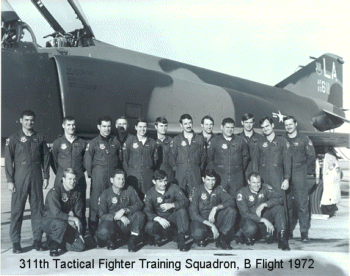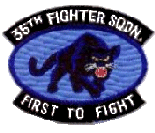
The backseater who ejected from this F-4 is a pilot named Kenny Boone. Kenny was one of my instructor pilots when I went through F-4 replacement training unit (RTU) at Luke AFB, Arizona, 1971 – 1972. Kenny was a pilot flying in the back seat on an orientation mission over the Ho Che Minh trail over Laos on November 18, 1968. Kenny’s airplane was hit by AAA while bombing the trail. Ray Battle, the aircraft commander, thought the airplane was going to crash so he told Kenny to eject. The frontseater recovered the airplane and landed it after Kenny departed.
Kenny landed in high trees in Laos. He was 200+ feet above the ground. Kenny heard the bad guys shooting and and acted as a tree-borne forward air controller. Kenny decided he would be safer in the trees so he did not use his tree lowering device to let down to the ground. It was getting dark and the search and rescue guys told Kenny they could not rescue him until the morning. Kenny stayed atop the trees in his parachute harness all night. The next morning the Jolly Green helicopter dropped Kenny a tree penetrator and lifted him from the trees to safety.
Kenny is the only instructor pilot I remember from my F-4 RTU. One day in 1972 Kenny’s brother talked to my class about his experience as a slow forward air controller flying the O-2 Skymaster in southeast Asia. He had recently finished his FAC tour and returned to the U.S. I distinctly remember 8 mm movies Kenny’s brother showed us taken during some of his FAC missions.
What follows is Ray Battle’s comments on the mission:
Kenny Boone and I were flying a fast mover FAC mission along the Ho Chi Min trail in Laos. It was an orientation ride for Kenny as he was newly assigned to my unit. We were at 4,000 feet and Kenny was flying the airplane when I heard an explosion, the aircraft shuddered and the front windscreen was covered in what turned out to be hydraulic fluid.
My sensation was that the aircraft as out of control and I ordered Kenny to eject which he did. Instinctively, I took the stick and throttles in hand and to my amazement, the aircraft as flyable. I called for help for Kenny and headed back for Thailand where we were stationed. I was given the option of ejecting or landing gear up as the landing gear would not come down.
I elected to land gear up and catch the runway wire with my tail hook. I have 150 aircraft carrier landings and thought I could easily make and arrested landing on the runway. I pulled the power off just as I touched down and the aircraft settled onto the wire cutting it.
The aircraft slid down the runway and veered off to the right before fish-hooking to the right and stopping. It caught on fire and I jumped out safely. As you know Kenny was recovered after spending a nervous night hanging in a tree in Laos In retrospect, My ordering Kenny to eject was a mistake which I have always regretted. I felt at the time I was saving his life and I intended to eject after he did. We both survived the incident for which I am grateful.”
The picture below is B flight of the 311 Tactical Fighter Training Squadron at Luke AFB 1972. I’m in the back row 6th guy from the left. Kenny is in the front row third from the left.

More About Kenny Boone
After attending Undergraduate Pilot Training at Reese Air Force Base, Lubbock, Texas, F-4 Replacement Training, Air Force Survival Training and Jungle Survival Training, he was assigned to the 497th Tactical Fighter Squadron ‘Night Owls’, 8th Tactical Fighter Wing ‘Wolfpack’, Ubon Royal Thai Air Force Base, Thailand in 1968 as a Weapons System Operator (WSO) aka Guy In Back (GIB) flying the F-4D, Phantom II.
On November 18, 1968, just six days after the first Wolf mission was flown out of the 8th TFW, Ubon RTAFB, Major Benjamin Ray Battle (433rd TFS) and 1st. Lt. Robert Kenneth ‘Kenny’ Boone (497th TFS) while flying a 433rd TFS aircraft were hit in Southern Steel Tiger. A 37mm impacted the radome and entire radome was blown off.
Unfortunately Kenny died in 2010. See Kenny’s memorial web page.

Leave A Comment